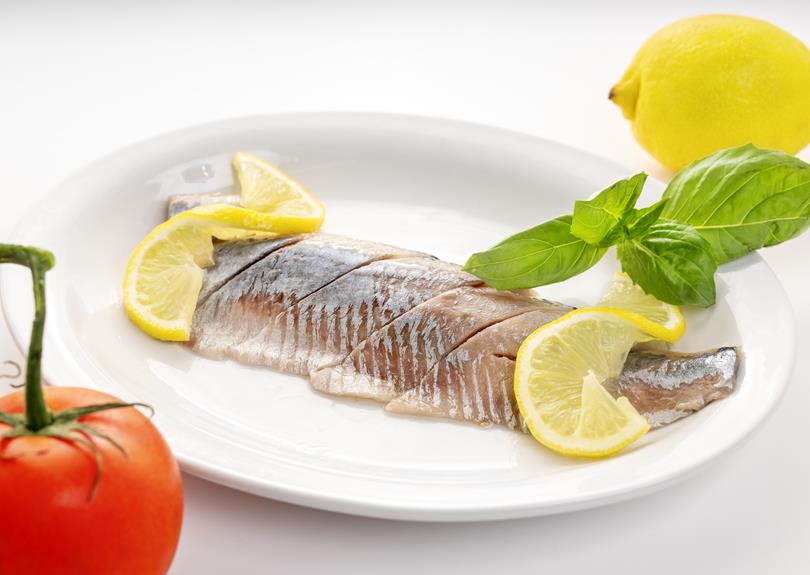
Oh, Spain, you never cease to amaze me with your culinary wonders! Join me on a journey through time as we explore the rich and vibrant past of Spanish cuisine. From the Roman influences that shaped its foundations, to the medieval traditions that still linger today, and the exotic flavors brought by the Moors. We'll uncover the secrets of the Golden Age, the impact of colonialism, and the innovations that continue to push Spanish cooking to new heights. Get ready to savor every delicious bite!
Key Takeaways
Table of Contents
- Roman, medieval, Moorish, and colonial influences have had a significant impact on Spanish cuisine.
- The Golden Age of Spanish Cuisine and modern innovations have shaped the culinary evolution in Spain.
- Balancing tradition and innovation is crucial in preserving authentic Spanish recipes and cultural significance.
- The culinary identity of Spain is showcased through influential figures, regional variations, and its contribution to world cuisine diversity.
Roman Influence on Spanish Cuisine
The Roman legacy has left a lasting impact on Spanish cuisine. Through cultural exchange and culinary fusion, the Romans introduced new ingredients, techniques, and flavors that continue to shape Spanish gastronomy to this day. One of the most significant contributions was the cultivation of wheat and the introduction of bread-making techniques. The Roman influence can also be seen in the use of olive oil, a staple in both Roman and Spanish cooking. Additionally, the Romans introduced new fruits and vegetables, such as grapes, figs, and artichokes, which are now integral to many Spanish dishes. They also brought new cooking methods, including grilling and stewing, which are still widely used in Spanish cuisine. In summary, the Roman influence on Spanish cuisine can be seen in the cultural exchange and culinary fusion that has shaped the flavors and techniques of traditional Spanish dishes.
Medieval Culinary Traditions in Spain
Delving into Spain's medieval culinary traditions, I discovered a treasure trove of gastronomic heritage. The medieval period in Spain saw a fusion of culinary influences from various cultures, resulting in unique cooking techniques and the use of historical ingredients. One prominent cooking technique was the use of spices to add flavor and depth to dishes. Spices such as saffron, cumin, and cinnamon were highly valued and used extensively in medieval Spanish cuisine. Historical ingredients like almonds, honey, and olive oil were also staples in many dishes. Almond milk, for example, was a popular alternative to cow's milk. The use of herbs such as thyme, rosemary, and bay leaves added an aromatic touch to the dishes. Exploring Spain's medieval culinary traditions provides a fascinating glimpse into the rich and diverse culinary heritage of the country.
Moorish Flavors and Techniques
I was fascinated by the abundance of Moorish flavors and techniques that shaped the culinary landscape of medieval Spain. The Moors, who ruled over parts of Spain for centuries, brought with them a rich culinary heritage that greatly influenced Spanish cuisine. One of the key elements of Moorish cuisine was the use of spices. Moorish spices such as saffron, cumin, and cinnamon were introduced to Spain and became integral to the country's culinary traditions. These spices added depth and complexity to dishes, creating a unique flavor profile that set Spanish cuisine apart. The fusion of Moorish and Spanish culinary techniques also gave birth to a new style of cooking known as fusion cuisine. This blending of flavors and cooking methods created a rich and diverse culinary tapestry that continues to be celebrated in modern Spanish cuisine.
Exploring the Golden Age of Spanish Cuisine
When it comes to exploring the Golden Age of Spanish Cuisine, two things stand out: the influential culinary figures and the historical gastronomic traditions. From the renowned chef Francisco Martínez Montiño to the elaborate banquets held at the Spanish court, these figures and traditions shaped the culinary landscape of Spain during this period. Understanding their contributions and the techniques they employed is key to truly appreciating the richness of Spanish cuisine.
Influential Culinary Figures
During the Golden Age of Spanish Cuisine, influential culinary figures shaped the gastronomic landscape of Spain. These individuals not only left a lasting impact on Spanish cuisine but also contributed to the global culinary scene. Here are five influential culinary figures from this era:
- Ferran Adrià: Known for his innovative techniques and molecular gastronomy, Adrià revolutionized modern Spanish cuisine.
- Juan Mari Arzak: Considered the father of modern Basque cuisine, Arzak's avant-garde approach and use of local ingredients garnered international recognition.
- Carmen Ruscalleda: The first female chef in Spain to hold three Michelin stars, Ruscalleda's creative and refined cooking showcased the diversity of Catalan cuisine.
- Santi Santamaria: A strong advocate for traditional cooking methods, Santamaria's commitment to quality ingredients and simplicity helped preserve the authenticity of Spanish cuisine.
- José Andrés: With his passion for Spanish gastronomy, Andrés played a crucial role in popularizing tapas and showcasing the rich flavors of Spain to the world.
These influential culinary figures not only shaped the Golden Age of Spanish Cuisine but also contributed to the impact of globalization on the culinary world.
Historical Gastronomic Traditions
Continuing our journey through the Golden Age of Spanish Cuisine, let's delve into the historical gastronomic traditions that shaped this remarkable era. The cultural evolution of Spain during this time greatly influenced its culinary landscape. The influx of new ingredients from the New World, such as tomatoes, potatoes, and chocolate, brought about a revolution in Spanish cooking. These ingredients were incorporated into traditional recipes, creating unique and flavorful dishes that are still enjoyed today. Additionally, regional variations played a significant role in shaping Spanish cuisine. Each region had its own distinct flavors and cooking techniques, resulting in a diverse culinary tapestry. From the seafood-rich coastal regions to the hearty stews of the interior, the regional variations of Spain's Golden Age showcased the country's culinary prowess and creativity.
Colonial Influences on Spanish Gastronomy
As a result of the colonization of various countries, Spanish gastronomy has been greatly influenced by the introduction of new ingredients and culinary techniques. The impact of Spanish colonization on the culinary landscape can be seen in the influence on Mexican cuisine and the overall impact on Latin American food. These colonial influences have brought about a fusion of flavors and cooking styles, creating unique and delicious dishes that are enjoyed worldwide. Some key aspects of the colonial influences on Spanish gastronomy include:
- Introduction of ingredients such as tomatoes, potatoes, and chocolate
- Incorporation of indigenous cooking techniques and spices
- Development of new dishes and flavors through the blending of Spanish and indigenous cuisines
- Adoption of cooking methods such as frying and stewing
- Evolution of traditional Spanish dishes with the addition of new ingredients and flavors
These colonial influences have not only enriched Spanish gastronomy but have also contributed to the diversity and vibrancy of world cuisine.
Modern Innovations in Spanish Cooking
With the influence of colonial gastronomy still evident, modern innovations in Spanish cooking have taken traditional dishes to new heights. One of the most exciting developments in recent years is the rise of fusion cuisine, which combines elements of Spanish cooking with ingredients and techniques from other cultures. This blending of flavors and cooking styles has resulted in unique and inventive dishes that showcase the diversity of Spain's culinary landscape. Additionally, the emergence of molecular gastronomy has pushed the boundaries of Spanish cuisine even further. Chefs are using scientific techniques and tools to transform traditional recipes into visually stunning and creatively presented dishes. By experimenting with textures, temperatures, and flavors, they are creating a dining experience that is both innovative and satisfying. These modern innovations are a testament to the ongoing evolution of Spanish cooking.
Preserving Traditional Spanish Recipes
Preserving traditional Spanish recipes is a topic that sparks a crucial debate between authenticity and modernization. Many argue that staying true to the original recipes is essential to honor the rich cultural heritage and maintain the unique flavors of Spain. On the other hand, some believe that adapting these recipes to the changing times can help keep them relevant and accessible to a wider audience.
Authenticity Vs. Modernization
In my journey to explore Spain's rich culinary past, I have encountered the ongoing struggle of balancing authenticity and modernization in preserving traditional Spanish recipes. The authenticity debate surrounding traditional vs. contemporary cooking methods and ingredients is a hot topic in today's culinary world. Here are some key points to consider:
- Respecting the roots: It is important to honor the history and cultural significance of traditional Spanish recipes.
- Adapting to the times: Embracing modern techniques and ingredients can breathe new life into traditional dishes.
- Preserving flavors: Striking a balance between innovation and tradition ensures that the essence of Spanish cuisine is not lost.
- Engaging the younger generation: Incorporating contemporary elements can attract younger food enthusiasts and keep the culinary traditions alive.
- Valuing uniqueness: Preserving traditional Spanish recipes helps maintain the country's distinct culinary identity.
Finding the right balance between authenticity and modernization is crucial in preserving the rich culinary heritage of Spain.
Cultural Significance of Recipes
The cultural significance of traditional Spanish recipes lies in their ability to connect generations and preserve a shared heritage. Recipes are not just about the food itself; they are a reflection of the history, traditions, and values of a culture. Through the preservation of these recipes, we are able to maintain and pass down our culinary heritage to future generations. Cultural preservation is important because it allows us to understand and appreciate where we come from, and to honor the traditions of those who came before us. Traditional Spanish recipes tell a story, each dish carrying with it the flavors and memories of generations past. By cherishing and continuing to cook these recipes, we are keeping our cultural identity alive and ensuring that our culinary heritage remains a vital part of who we are.
Frequently Asked Questions
What Are Some Traditional Spanish Ingredients Commonly Used in Roman Influenced Dishes?
Some traditional Spanish ingredients commonly used in Roman influenced dishes are olive oil, garlic, and saffron. These ingredients add depth and flavor to the dishes, creating a unique blend of Roman and Spanish culinary traditions.
How Did Medieval Spanish Culinary Traditions Impact the Overall Cuisine of Spain?
Medieval Spanish culinary traditions greatly influenced modern Spanish cooking techniques. The evolution of ingredients from that time period has had a significant impact on contemporary Spanish cuisine, creating a rich and flavorful culinary tradition.
What Are Some Specific Moorish Flavors and Techniques That Have Influenced Spanish Cuisine?
Oh boy, let me tell you about those Moorish flavors and techniques that have influenced Spanish cuisine! We're talking about the delicious Moorish spices and the mouthwatering Moorish cooking techniques. They sure know how to add a kick to our dishes!
How Did the Golden Age of Spanish Cuisine Contribute to the Development of Traditional Spanish Dishes?
During the Golden Age, Spanish cuisine blossomed, contributing to the development of traditional dishes. Culinary techniques evolved, incorporating new flavors and styles. Spanish explorers also brought back ingredients and cooking methods that influenced the country's culinary traditions.
How Did Colonial Influences Shape the Gastronomy of Spain and What Specific Dishes Were Introduced During This Time?
During the colonial era, Spain's gastronomy was transformed by the blending of culinary traditions from around the world. Exciting fusion dishes emerged, introducing new flavors and techniques that still delight taste buds today.




Leave a Reply
You must be logged in to post a comment.